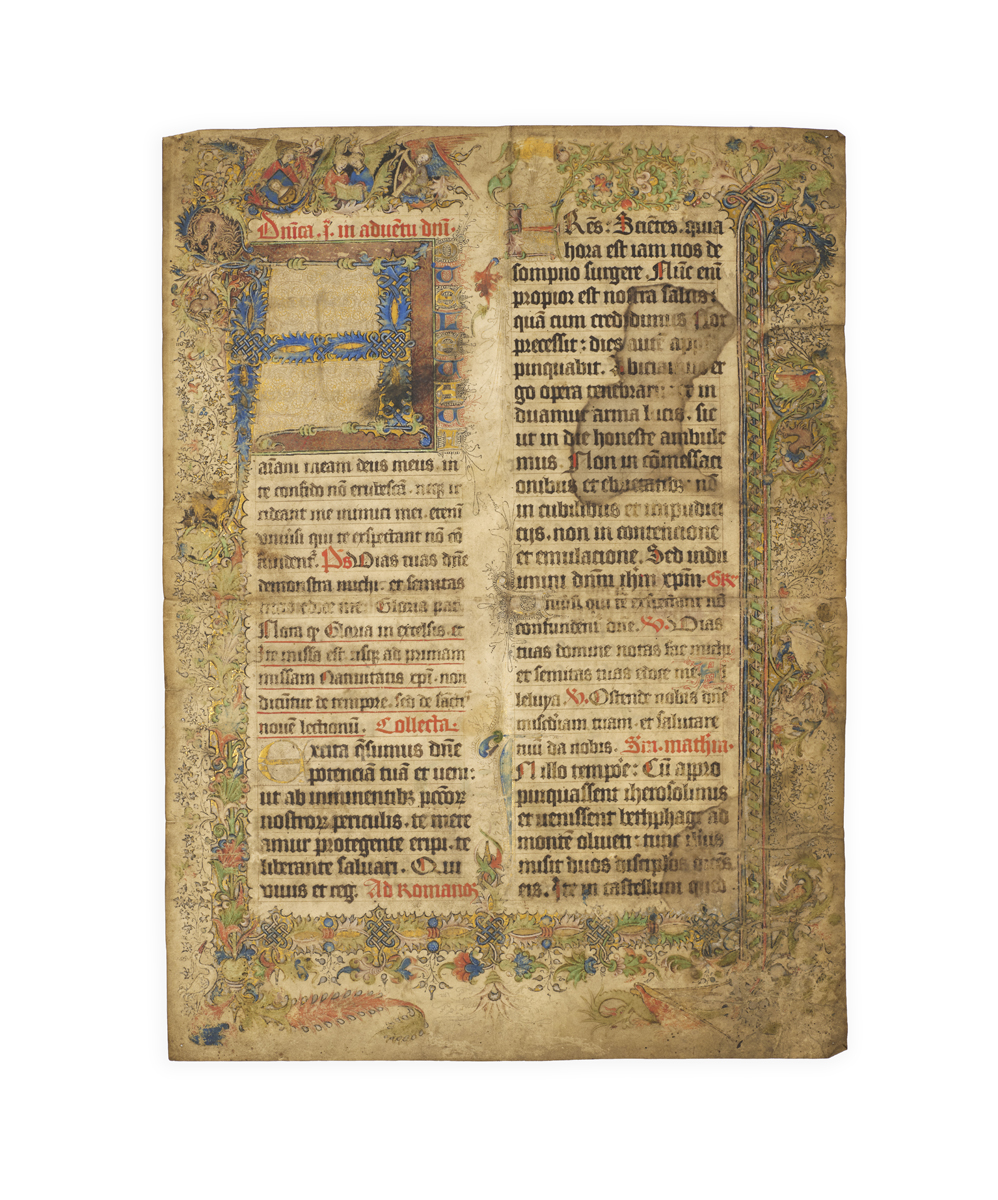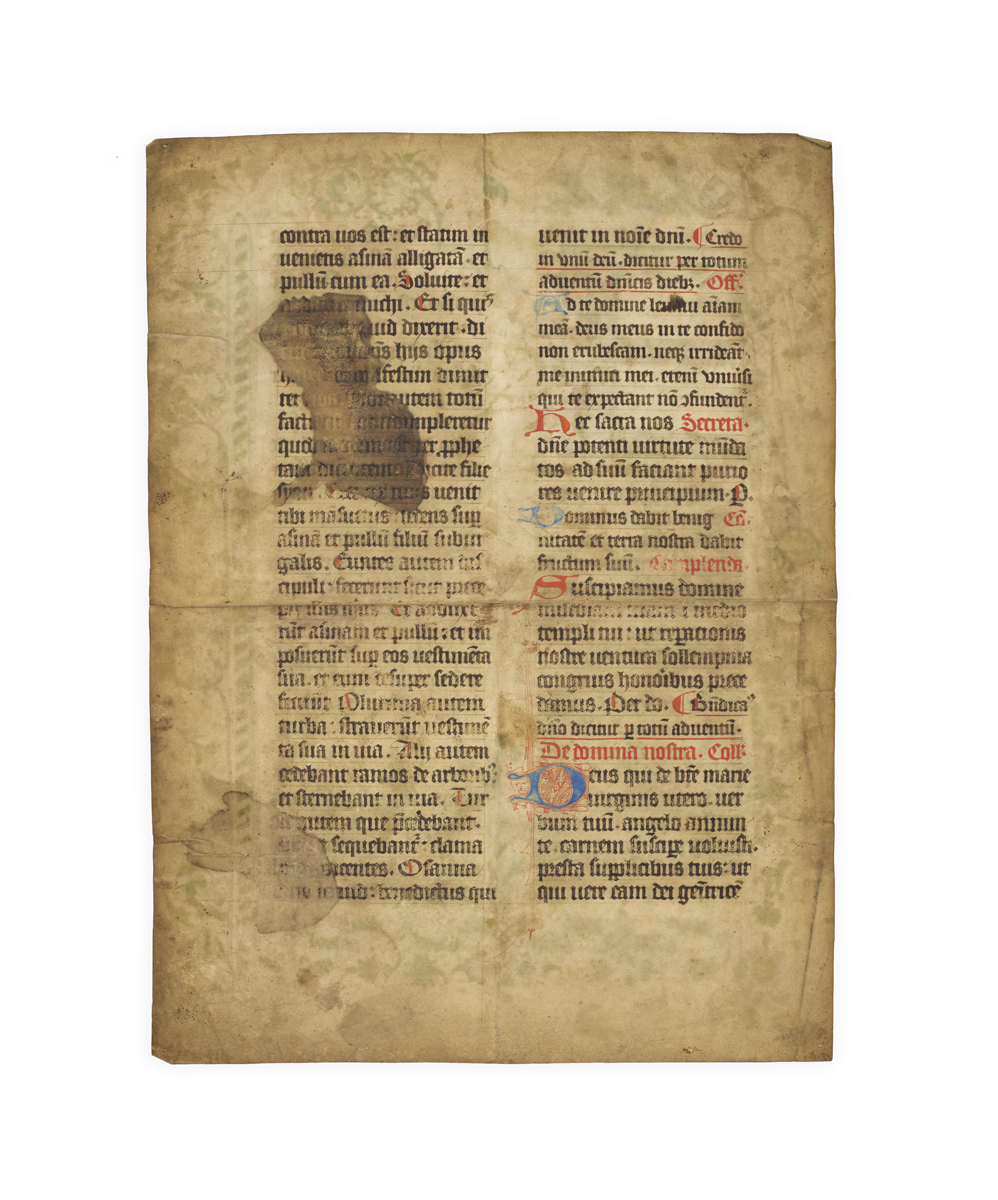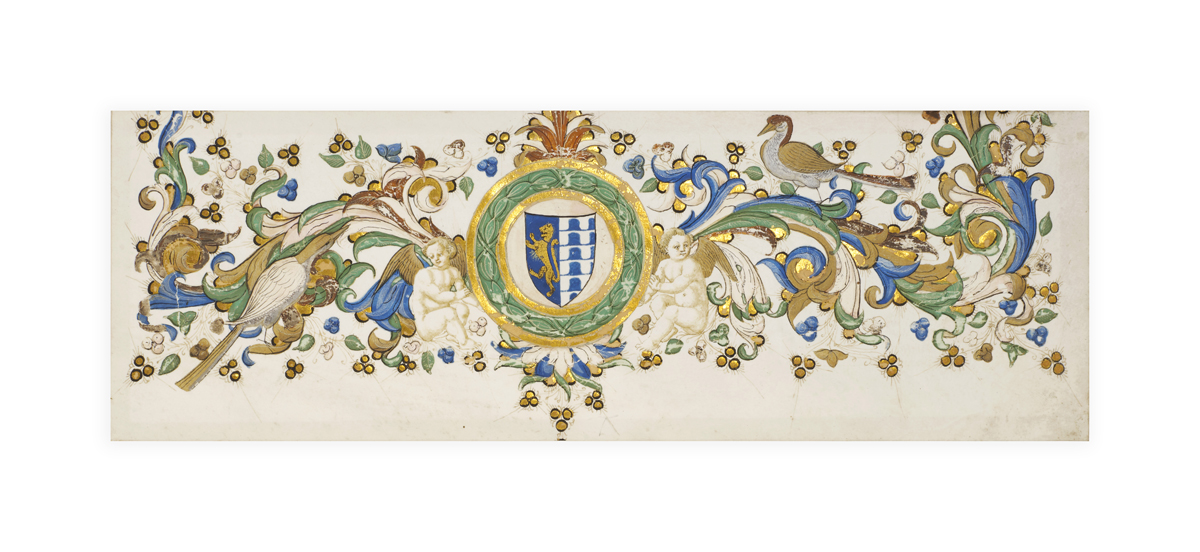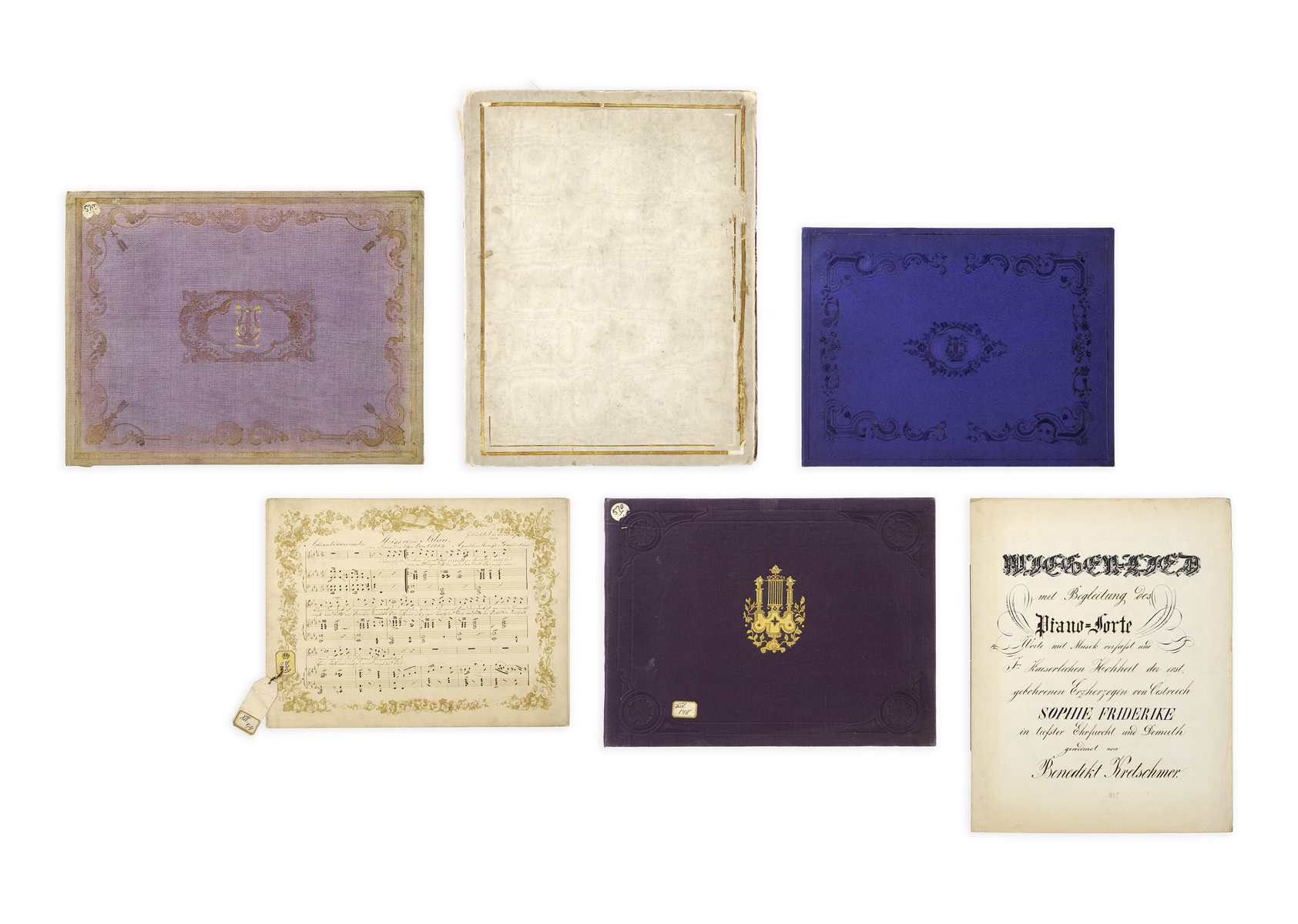

[MISSAL.]
Missal, in Latin, with readings for the first Sunday in Advent.
Southern Netherlands or northern France (Arras?), c. 1425.
A complete folio leaf (452 x 330 mm, text area 330 x 225 mm) with double columns of 29 lines written in two sizes of a fine formal gothic liturgical script in dark brown ink, ruled lightly in ink, very large nine-line initial ‘A’ (Ad te levavi) on recto formed of knotted and intertwining acanthus in blue and pale green against a burnished gold ground, framed by a mauve square edged in green and enclosing delicate scrollwork in shell gold, marginal extensions leading into a highly elaborate full-page border of dense ivyleaf decoration, sprays of acanthus and clusters of interlace, incorporating four angels (two singing from a shared choirbook, one playing a harp, and one bearing a coat of arms) and twelve animals or mythical beasts including a doe, a lion, a unicorn, two dragons, a pelican, a dog wearing a collar, and a bird of prey), all painted in shades of pale green, blue, orange, pink, brown, white and black, two-line illuminated initial ‘F’ (Fratres scientes quia hora est) of leafy design in shades of pale green, mauve, orange and blue and with delicate penwork in shell gold, smaller initials in burnished gold, blue or red with contrasting penwork (two-line initial ‘D’ on verso incorporating a human face), lesser initials alternately in red and blue, capitals touched in red, paragraph mark in red, rubrics; very rubbed and soiled, central horizontal and vertical creases where once folded, two large stains on verso showing through to recto.
A remnant of what must have been an exceptionally grand missal, with illumination of considerable finesse. We have been unable to trace any other leaves from the same manuscript.
The style points to the southern Netherlands or northern France. The border decoration, with its dense ivyleaf decoration and distinctive alternation of paired acanthus leaves and clusters of interlace (also found in the large initial), is reminiscent of manuscripts produced in Arras, an important centre of manuscript illumination; see, for example, Sotheby’s sale of 19 June 2001, lot 36, a fragment of a Breviary of the Use of Arras. We have been unable to identify the coat of arms borne by an angel at the top left-hand corner of the illuminated border (azure, a maiden’s head proper affronty), but assume that it relates to the original patron or donor of the parent manuscript.

